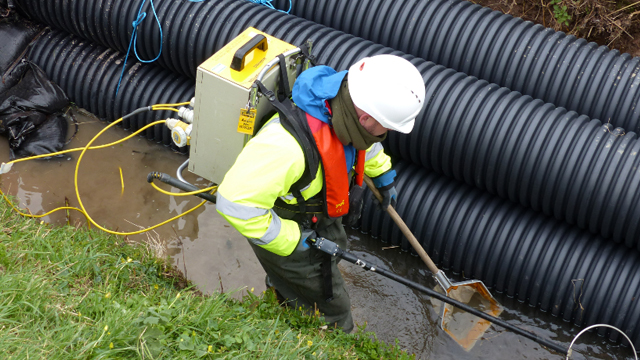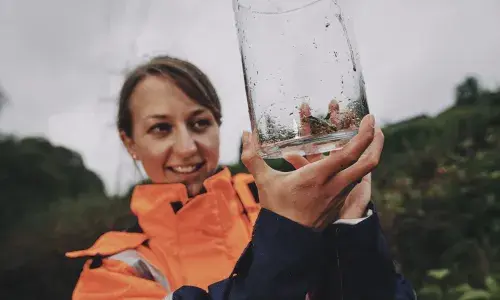
Over 600 fish rescued in Stogursey
Several species humanely relocated from East and West Brook
National Grid’s contractors, Morrison Energy Services in partnership with WSP and Adler and Allan, have undertaken three dedicated fish rescues in the village of Stogursey.
The fish rescues are part of National Grid’s commitment to protecting local wildlife while working to connect Hinkley Point C power station to the existing National Grid network; which, when complete, will bring low-carbon energy to the south west and connect six million UK homes and businesses.
The fish needed to be moved to allow culverts to be constructed to the specification of the Parrett Internal Drainage Board. The culverts were needed to provide access to towers, to allow for the installation of conductors across the new route into Shurton Substation.
The contractors use humane techniques to transfer the fish from one location to one outside the works area, to prevent any harm coming to them during construction. In this instance, over 600 fish have been rescued and moved to safer locations. A diverse range of fish have been caught and transferred, including stickleback, stone loach and bull head.
The fish are temporarily stunned by sending a small electrical charge through the water to allow them to be caught faster and more easily, to limit the human impact on them.
James Coope, Environmental Advisor at Morrison Energy Services, commented: “The sheer number of fish that were caught to enable the construction of the culverts was far greater than we had initially anticipated.
“This is fantastic news for local biodiversity as it means there is a very strong population of fish in the affected watercourses, particularly given that this is a very small area.”
Transferring over 600 fish to a new location is no small feat...
James Goode, Project Director on the Hinkley Connection Project, commented: “We have a strong track record of protecting local plant and animal life. The fish rescues conducted by Morrison Energy Services are testament to that track record. Transferring over 600 fish to a new location is no small feat. The team has proven how we can remain sensitive to the environment while connecting low-carbon energy from the south west.”


